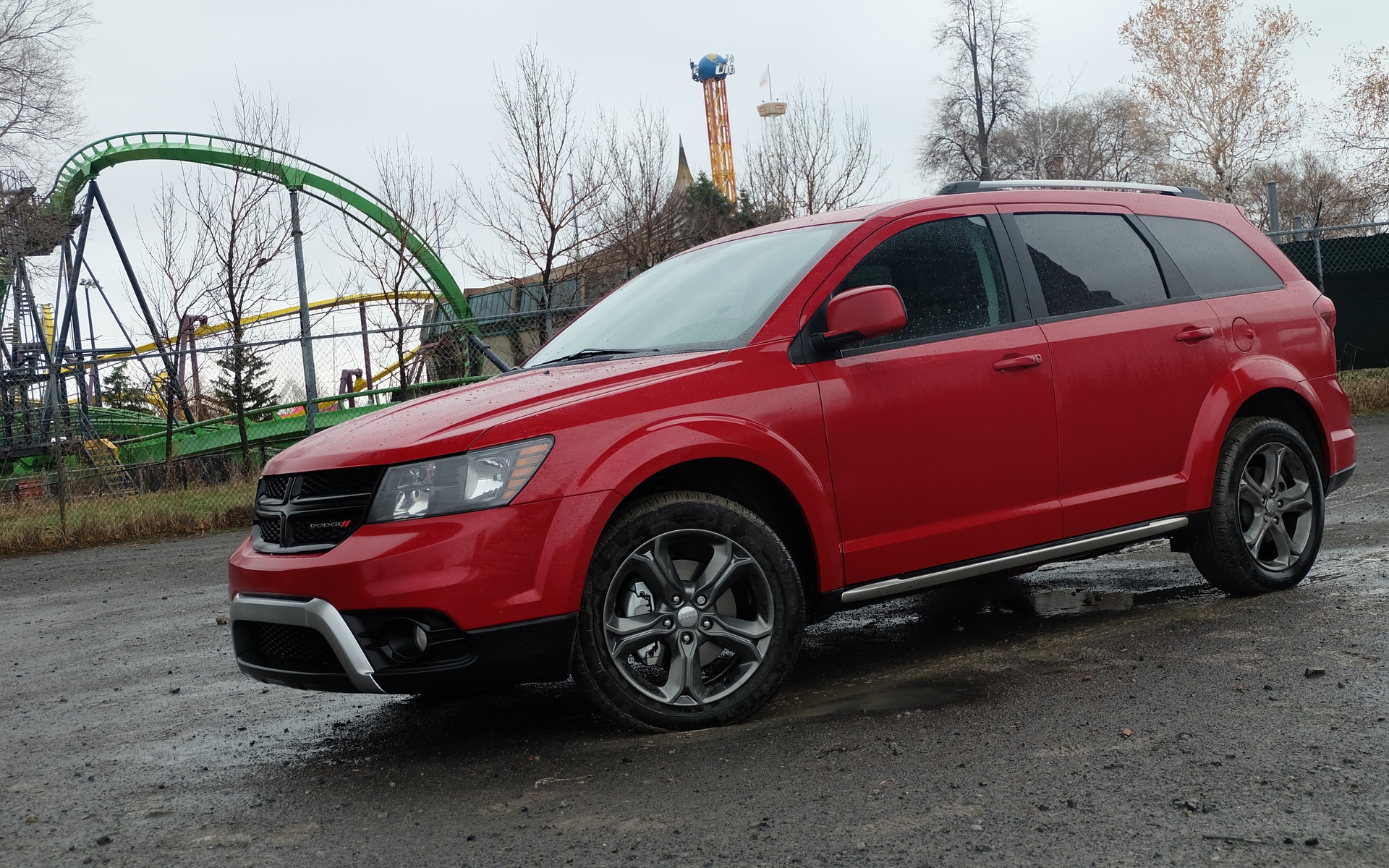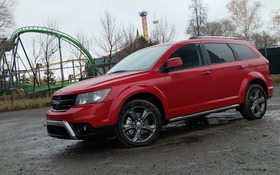2015 Dodge Journey: Don’t Call It A "Minivan"

| Strong points |
|
|---|---|
| Weak points |
|
Back in the 80s, Chrysler totally revolutionized family transportation with the Caravan. The brand may not have invented the concept, but it certainly popularized it in America. And then a funny thing happened: the generation raised in the Caravan rejected it when it came time to buy a vehicle for their own families. All of the sudden, minivans were extremely unpopular.
This didn’t dissuade Chrysler from believing that families needed—and wanted—a spacious vehicle that rides low to the ground and can carry up to seven people. It was just a matter of marketing it as something other than a “minivan.” This is exactly how the Dodge Journey came to be in 2008, built on Chrysler’s JC platform (also found in the Avenger and the old Chrysler 200). It followed the exact same recipe as the Caravan, combining front-wheel drive, a four-cylinder base engine and an affordable starting price. It also stole the place once occupied by the short-wheelbase Caravan, which was discontinued after the last overhaul, leaving the Grand Caravan to forge ahead on its own.
This ain’t no Caravan
The Dodge Journey’s appearance has hardly changed since it first launched. The Crossroad that I test drove for a full week was actually the latest iteration of this crossover, featuring massive 19-inch tires, a blackened grille, chrome exhaust tips and silver bumpers. It’s a good-looking machine. Since the vehicle’s capacity requires the body panels to have a certain vertical length, you can’t expect it to look like a coupe. But since it’s not a pure minivan either, it doesn’t sit too high and getting in and out is easy, both in front and in back. The more baseline models have fewer visual accessories, but the lines are essentially the same. And while it’s not overly flashy, the Journey manages to look different than its big sister, the Grand Caravan.
A modern minivan
Most people who say they don’t want a minivan have never even driven one, which explains why Dodge hasn’t souped up the Journey’s ride. Consequently, this crossover is a breeze to drive. The steering wheel turns easily and the power assistance is more than sufficient. At worst, the steering can be a little imprecise, but unless you’re planning on taking it to the autocross track, this shouldn’t pose a problem.
The standard engine is a 2.4-litre four-cylinder paired with an automatic that channels all 173 horses to the front wheels. This drivetrain is outdated, but nonetheless manages to haul the Journey from A to B. Plus, this little mill helps keep the vehicle’s starting price below the $20,000 mark. If you want all-wheel drive (or the possibility of accelerating faster than a sedated snail), opt for one of the trims with a Pentastar V6 and six-speed automatic transmission. Not only does this combination offer a lot more punch, it barely consumes more fuel, with the difference being less than a litre per 100 kilometres. This, of course, is according to the manufacturer’s data. In practice, we’ve seen the four-cylinder Journey guzzle gas like it was going out of style. The all-wheel drive is activated on demand: as soon as the system notices the front wheels sliding, power is redirected to the rear wheels.
On the road, the Dodge Journey handles just like an SUV that has been lowered a few centimetres. Since it’s still higher than most vehicles, visibility is not a problem. The inclined hood helps you see when parking, and the rear back-up camera is handy when reversing in tight spaces. On the V6 models, you can add a third row of seats. There’s isn’t tons of legroom, but it’s OK for kids. Speaking of which, the vehicle also boasts a very handy feature: the rear doors open to 90 degrees (versus 45 for most vehicles).
It’s all about the Journey
Since the Dodge Journey starts at $19,945, a lot of families see it as a modern alternative to the minivan their parents drove, and they’re absolutely right about that. In fact, there are lots of Journeys on the road. The only hitch is that the V6 versions—which are comfortable, powerful and can even tow a small trailer—can quickly become quite expensive. The one I tested was selling for $41,085.
The Journey is slated for an update pretty soon. But until then, the current generation is a good deal that will transport you and your offspring in relative comfort. Its best feature? It ain’t no Grand Caravan.











